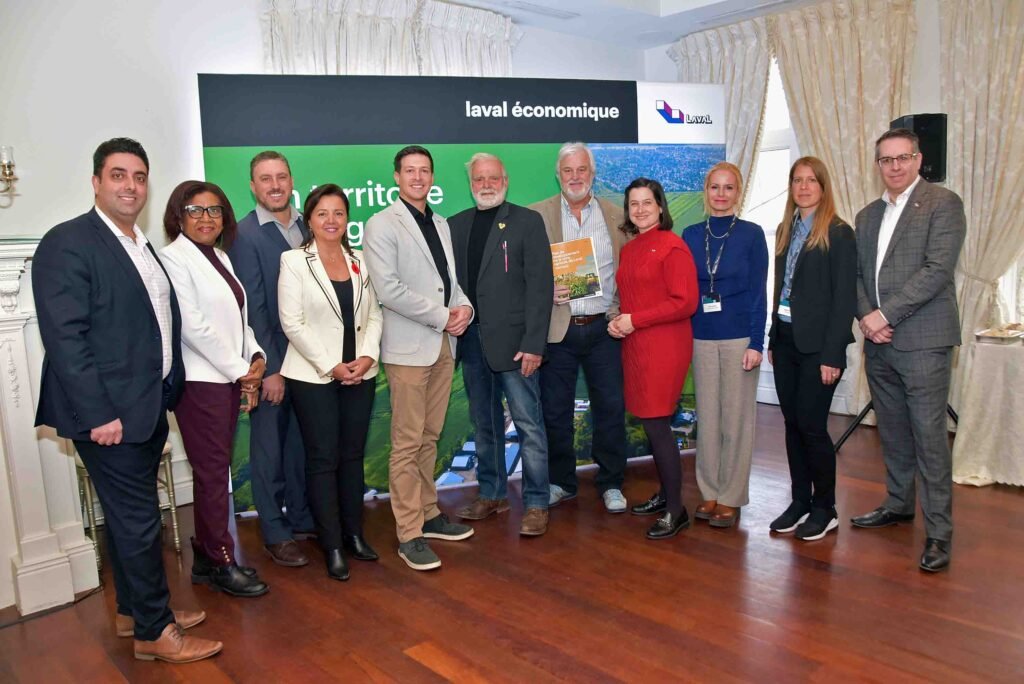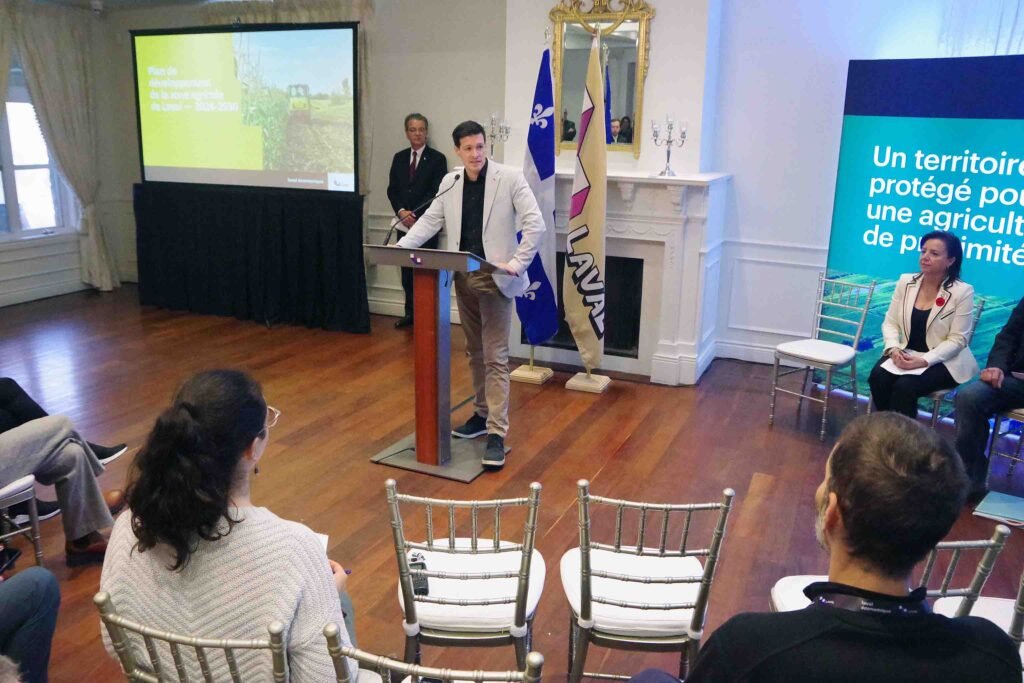City hopes to strike a proper balance between farming and urban growth
With a history closely connected to farming for hundreds of years – although urban development now takes up 70 per cent of Laval’s territory – the city is hoping to strike a reasonable balance between the two with a new agricultural zone development policy to be implemented over the next five years.

Safeguarding farmlands
The new policy, known within Laval’s urban planning department as PDZA 2024-2030, was formally launched at a splashy media event held appropriately at the campus of one of Laval’s remaining agri-businesses: the Château Taillefer Lafon cidery/winery on Montée Champagne between Sainte-Dorothée and Laval-Ouest.
The plan was also tabled and approved by Laval city council three days earlier. Laval has some of the richest agricultural land in eastern Canada and it is still renowned for its market gardening.
You have only to take a Sunday afternoon drive during the summer or autumn around areas such as Laval-Ouest, the vast Saint-François district or Sainte-Dorothée to see the vegetable stalls and just how present farming still is on Laval’s territory.
Farming versus development
But over the past 60 years since the City of Laval’s creation from a patchwork of rural towns and villages, the amount of farmland used for cultivation purposes has been steadily eroded by an ongoing stream of urbanization.
Although this may be far more lucrative in the short term for landowners – who pocket lump sums from developers while often giving up their ancestral land heritage – and the city, who earn a lot more in tax revenue on properties after they are developed – for some it’s a policy that’s more short-sighted in the long run.
From time to time in Laval city council, amidst the regular complaints from home owners and businesses, representatives of the ever-diminishing number of farmers still working in Laval turn up to complain about how they feel squeezed out of the picture. Hopefully, PDZA 2024-1030 will be the answer.

Rejuvenating local farming
According to a summary of the new plan issued by the city, the goal is to make agriculture a sustainable (i.e. self-supporting) activity, while identifying related projects and orientations for the next five years. In all, 30 per cent of Laval’s territory (7,000 hectares) is still used for farming and the city wants to keep it that way – partly by strengthening farming’s local economic importance.
In addition to its still considerable economic impact, what remains of farming in Laval is also seen as a fundamental part of the overall strategy for providing food security in the greater Montreal region.
The city notes that in spite of agriculture’s diminished importance in Laval’s development scheme, there are still 119 farms left operating, which employ 1,500 people. More significantly, farming in Laval is worth $92 million in revenue annually.
‘An essential element,’ Boyer says
Another apparent aim of the new policy, according to a statement issued by Mayor Stéphane Boyer, is to bring agricultural lands which have been inactive for years or even decades back into cultivation so they can serve a sustainably useful purpose.
“Agriculture is an essential element in the identity of Laval, and PDZA 2024-2030 will be putting flesh on this vision,” Mayor Boyer said in the statement.
Key elements of PDZA 2024-2030 include:
- Improved access to farmland through the consolidation and recultivation of agricultural fields in order the expand the amount of available farming space in Laval.
- Encouraging local agriculture and agrotourism, by promoting local production and consumption of farm products along with the economic development of local agricultural enterprises.
- Development of diversified and innovative agricultural businesses, including those that produce using sheltered and enclosed cultivation methods, which (according to the city) is a sector in full expansion and in which Laval is a leader on a national scale.

A suburban dilemma
Among suburban Canadian municipalities, the City of Laval is by no means unique in having had to develop a policy to strike a balance between its earlier rural roots and rapidly accelerated urban growth, while existing on the fringe of a major metropolis.
In Ontario, the City of Mississauga, which was once a relatively small and largely rural suburb of Toronto, grew exponentially since the late 1960s from 107,000 to more than 720,000 inhabitants now.
Like their counterparts in Laval (pop. 443,000 and growing), officials with the City of Mississauga decided to implement an Urban Agricultural Strategy to increase access to healthy food, diversify food sources and build community relationships.
City of Mississauga’s plan
The strategy includes actions such as:
- Encouraging urban agriculture
- Removing barriers to urban agriculture
- Enabling urban agriculture
As well, the Regional Municipality of Peel (which includes Mississauga) decided to implement policies that support agriculture, including:
- Protecting agricultural land
- Supporting the agri-food network
- Enhancing support for urban agriculture



